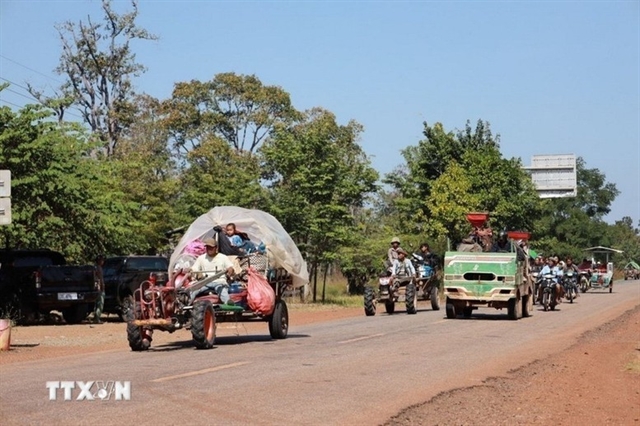 Society
Society

 |
| A mango orchard in Đồng Tháp Province’s Thanh Bình District. — VNA/VNS Photo Nguyễn Văn Trí |
ĐỒNG THÁP — The Cửu Long (Mekong) Delta province of Đồng Tháp is expanding the cultivation of mangos that meet good agricultural practices (GAP) and other high quality standards to satisfy the requirements of domestic and export markets.
The country’s largest mango producing province has identified mango as one of its six key agricultural products as it restructures agricultural production.
It aims to develop a mango cultivation area of 11,055ha by 2025, according to the province's Department of Agriculture and Rural Development.
All mango growing households will participate in co-operatives, co-operative groups or farmers club houses and cultivate the fruit to GAP standards by 2025, it said.
Lê Quốc Điền, deputy director of the department, said mango orchards account for 33.7 per cent of the province’s total fruit area and have an annual output of more than 130,000 tonnes.
The province’s mangoes are sold at home and abroad, including in Japan, South Korea, Singapore and China.
To have stable quality mango supply, the province has developed concentrated growing areas for Chu and Hoà Lộc, two specialty mango varieties.
The two varieties account for 60 per cent of the province’s total mango production and are planted mostly in Cao Lãnh District and Cao Lãnh City.
Farmers are developing the cultivation of off-season mangoes to avoid oversupply during the main harvest season and get higher prices.
The price of off-season mangoes is VNĐ10,000 a kilogramme higher than main-season mangoes.
Đoàn Thanh Hiền, a member of the Mỹ Xương Mango Co-operative, is one of the first farmers producing off-season mangoes in Cao Lãnh District.
“The model of growing off-season mangoes helps regulate the output of mangoes year round, balance the supply and demand and increase farmers’ profits,” he said.
Farmers growing off-season mangoes earn a profit of VNĐ200 - 250 million (US$8,600 - 10,700) per hectare a year while the profit for main season mangoes is VNĐ150 -160 million ($6,400 – 6,800).
To increase quality, farmers have cultivated mangoes according to GAP standards and used plastic bags to cover the fruit and keep pests away.
Mango areas which use plastic bags to cover fruits account for more than 85 per cent of the province’s total mango areas, according to the department.
The use of plastic bags has greatly reduced the use of pesticides.
Professor Trần Văn Hậu of Cần Thơ University said to develop the mango sector, the province should develop linkages among farmers for large scale cultivation, and linkages among farmers and companies to meet the requirements of export markets.
The province will increase the application of advanced techniques for mango production in 2021 - 2030, especially seedling production, post harvest preservation, packaging and processing, according to the department.
Chu and Hoà Lộc mangoes will still be the province's key mango varieties during the period.
The province will inspect old and low quality mango orchards and will support seedlings for farmers to renovate the orchards.
It will encourage the use of mango byproducts such as peels and seeds to produce products such as animal feed or fertilisers.
It will promote the brand name and location of Cao Lãnh mango to serve export markets.
There are eight co-operatives, 37 co-operative groups and 23 farmer club houses in which farmers co-operate together to grow mango and link with companies to secure outlets.
The province has assisted co-operatives and co-operative groups that produce mangoes under GAP standards to export the fruit to South Korea, Japan, New Zealand, China and Russia through export companies in HCM City and Hà Nội. — VNS




